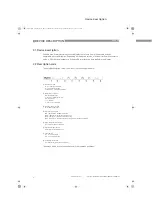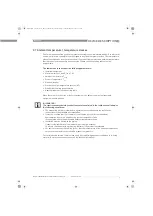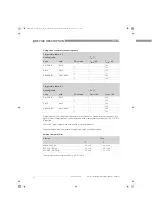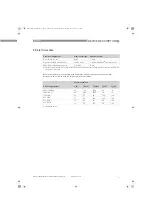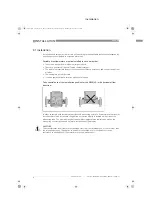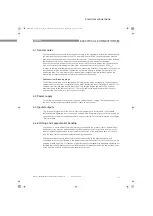
ELECTRICAL CONNECTIONS
4
13
H250 M9
www.krohne.com
03/2013 - 4002553501 MA H250/M9-NEPSI Ex i AD R01 en
Electrical connections
4.1 General notes
The connecting cables should be selected according to the applicable installation standards and
the maximum operating temperature. The outside diameter of the connecting cables must be
matched to the sealing area of the conduit entry/entries. The connecting cables must be laid and
fastened securely in such a way that they are adequately protected against damage.
All cores that are not used must be securely connected to the earth potential of the hazardous
area or carefully insulated against each other and against earth (test voltage
≥
500 V
eff
).
In order to comply with thermal parameters and measuring accuracy, flowmeters for horizontal
installation are to be installed in the pipeline so that the display is located on the side of the
measuring tube. The maximum product and ambient temperatures indicated as well as the
measuring accuracy are based on lateral installation of the display.
Cable entries / Blanking plugs
The variable area flowmeter is equipped with two blanking plugs as standard. These elements
guarantee protection from foreign bodies and water (protection type) IP65 as per EN 60529. The
cable entries provided also ensure protection from foreign bodies and water. The nominal
diameter range of the cable entries is 5...10 mm. Suitable blanking plugs are to be used for
unused cable entries. Ensure that the seals are tight.
4.2 Power supply
The variable area flowmeter does not require a separate power supply. The required supply for
the built-in electronics is provided via the 4...20mA current output.
4.3 Inputs/outputs
The terminal assignment of the built-in electrical equipment is described in the Standard
Installation and Operation Instructions. The variable area flowmeter signal circuits may only be
connected to certified intrinsically safe slave units or circuits. For more information see chapter
"Electrical data"
4.4 Earthing and equipotential bonding
If the device is not sufficiently electrostatically grounded via the process cables, an additional
earth connection must be established using the ground terminal. The ground terminal on the
back of the display guarantees an electrostatic connection of the device and does not comply
with the requirements of an equipotential bonding connection.
Shields should be securely connected to the earth potential of the hazardous area, and
connected to the terminal located in the indicator part via the shortest route. In the case of shield
earthing at both ends (e.g. for reasons of electromagnetic compatibility), adequate equipotential
bonding that reliably prevents potential differences is necessary between the two earthed ends
of the shield in order to avoid excessive equalising current.
AD_H250_M9_NEPSI_Ex_ia_R01_en_4002553501_PRT.book Page 13 Thursday, March 7, 2013 7:31 AM




